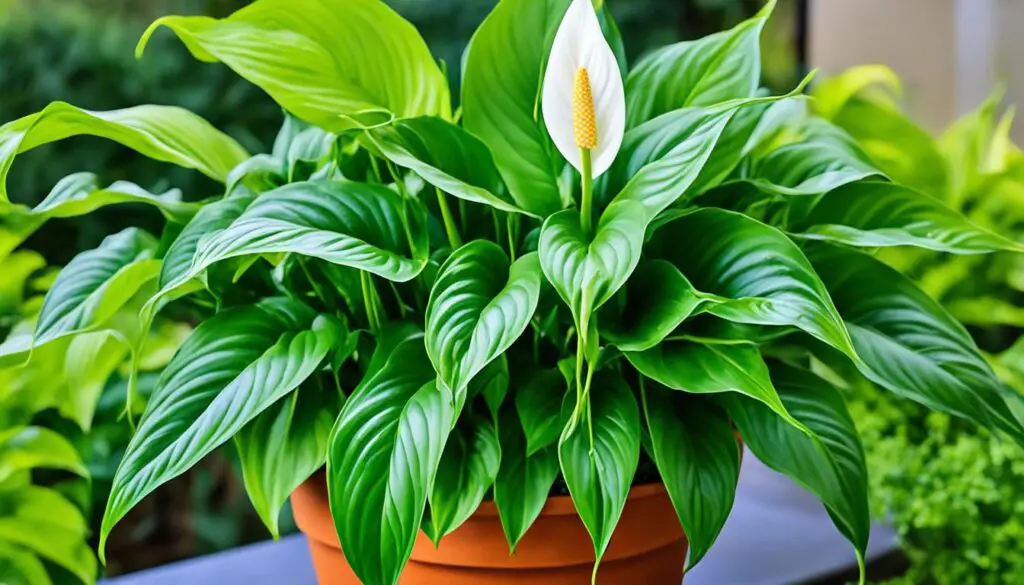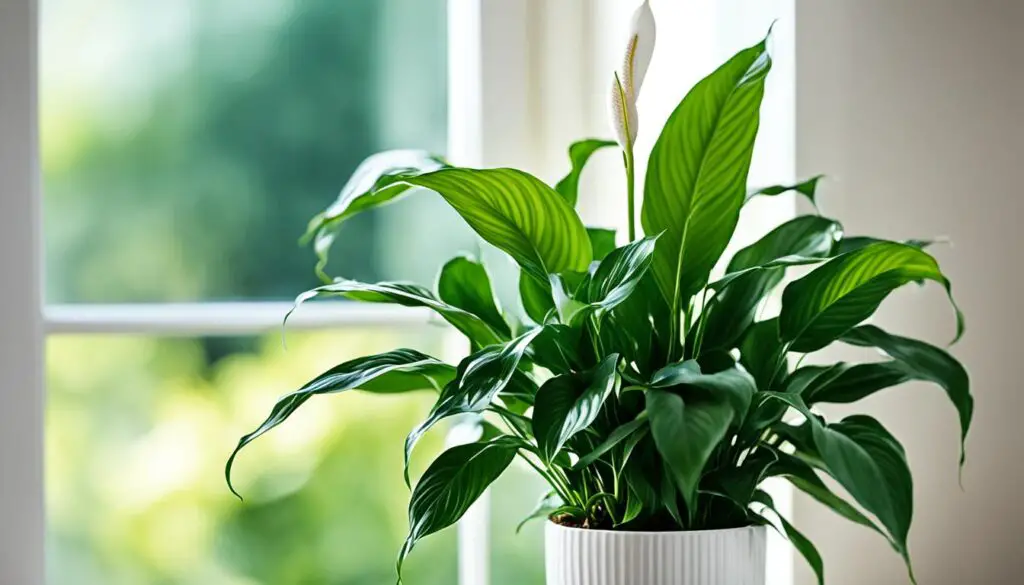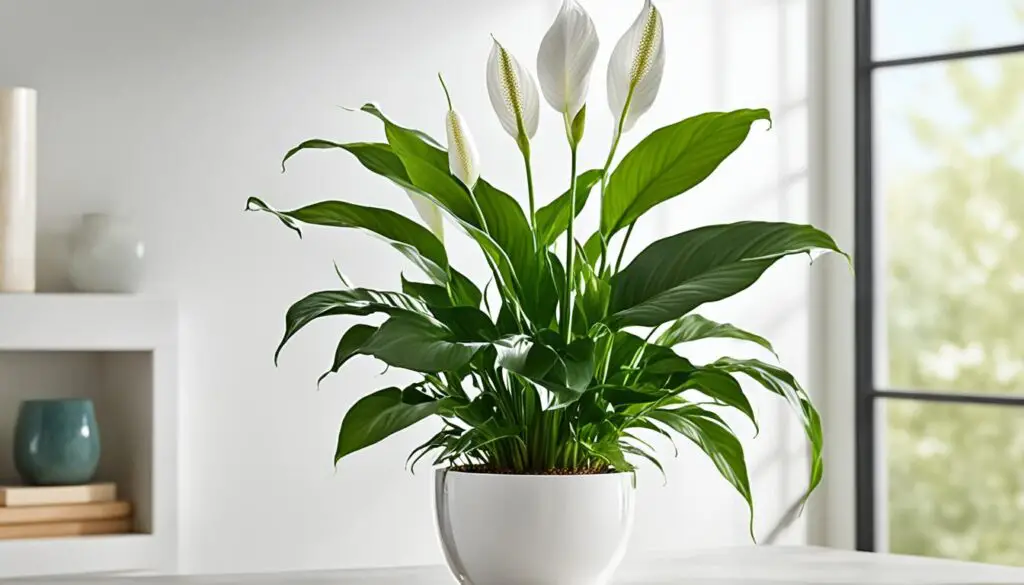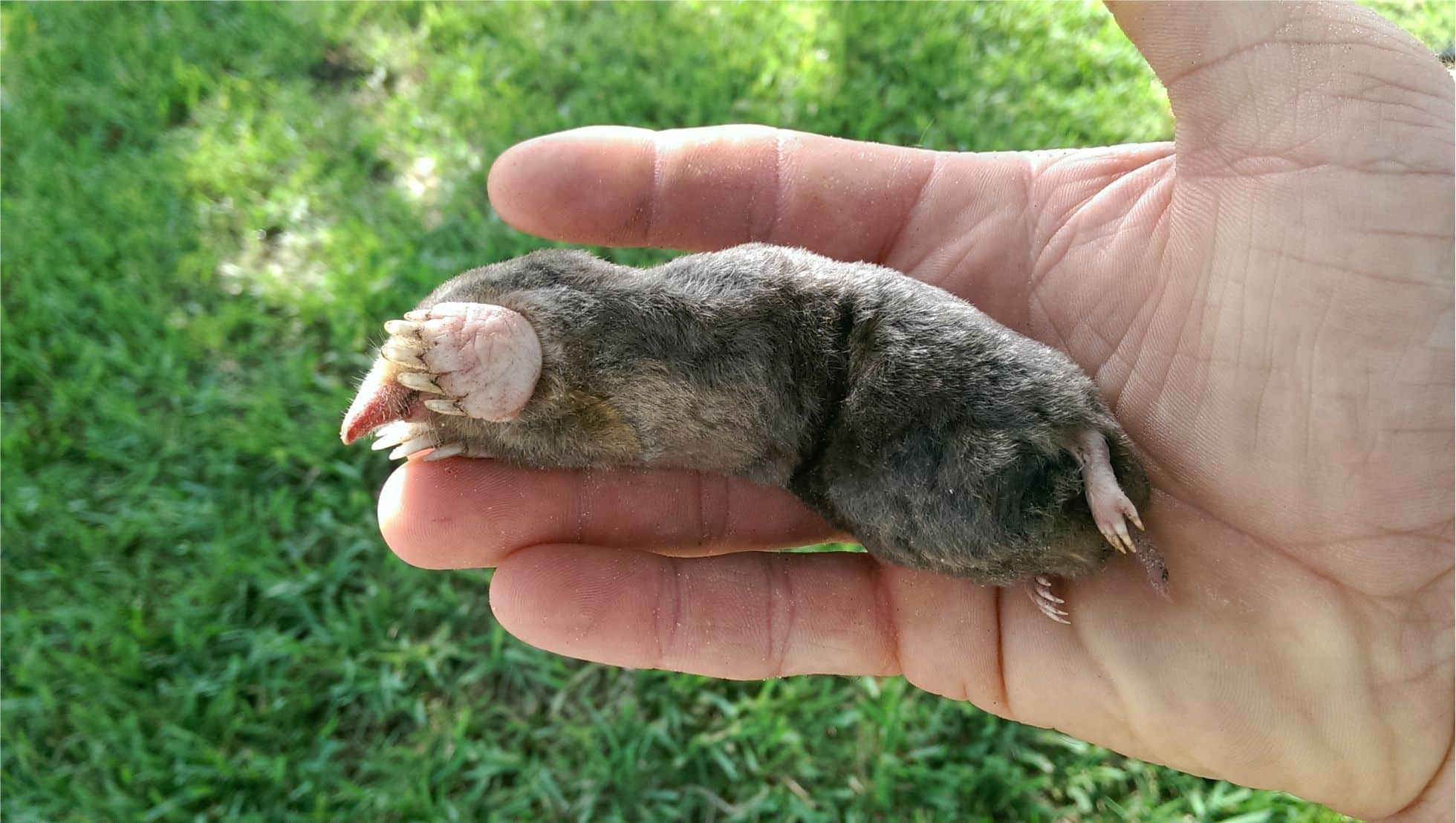I’m thrilled to share my knowledge on growing and caring for the peace lily, a favorite indoor plant.
This guide is perfect for both new and seasoned plant owners. It will give you the skills and advice to keep your peace lily happy and healthy.

Key Takeaways
- Peace lilies are perfect for homes or offices, living for years with the right care.
- They need bright, indirect light to bloom well, but they don’t do great in low light.
- Keeping the soil consistently moist and well-drained is key for healthy plants.
- Too much water and direct sunlight can cause problems like yellow and brown leaves.
- Regular pruning, fertilizing, and repotting are important for your peace lily’s growth.
About Peace Lilies
What Are Peace Lilies?
Peace lilies are not true lilies but tropical plants in the Arum family. They come from Central and South America.
These plants love the forest floor, needing dappled sunlight, steady moisture, and high humidity.
Household peace lilies can grow up to 16 inches tall. Some outdoor varieties can reach 6 feet. Their name comes from the white flowers that look like flags above the green leaves.
Peace Lily Toxicity
Peace lilies are mildly toxic. They have calcium oxalate which can irritate the stomach and lungs if eaten too much. Keep them away from kids and pets that might want to chew on them.
Other plants like philodendrons, daffodils, true lilies, and hyacinths also have calcium oxalate.
Peace lilies are known as Spathiphyllum wallisii. They are a popular houseplant from Central America. They have shiny green leaves and white flowers called spathes that last about four weeks.
Peace lilies start flowering in early spring. They like bright, humid places to grow.
These plants can grow in low light but flower best in bright, indirect light. Water them so the soil stays moist but not soaked. Wait until the top few centimeters dry out before watering again.
Feeding them with liquid houseplant food in spring and summer helps. Do this every two weeks.
Grow A Peace Lily and Care
Planting and Repotting
To grow a thriving peace lily, start with the right planting and repotting steps. Choose a container that’s twice the size of the root ball for planting a peace lily.
Fill it with well-draining, all-purpose peace lily soil. This soil should hold moisture but also dry out slowly, as peace lilies prefer not to dry out completely but can’t stay wet.
Repot your plant every few years in the spring to refresh the peace lily soil and encourage growth.
If the plant gets too big for its pot, divide it into smaller clumps. Each clump should have several leaves. This method rejuvenates the plant and lets you make new peace lily plants.
| Peace Lily Variety | Typical Size |
|---|---|
| Compact ‘Power Petite’ and ‘Sweet Chico’ | 10 to 20 inches tall and wide |
| Midsize ‘Mauna Loa Supreme’ | Up to 4 feet tall and wide |
| Largest ‘Sensation’ | 4 to 6 feet tall and wide |
Knowing the right peace lily pot size and when to repot helps your peace lily flourish. It will keep making your indoor space beautiful for many years.

“Peace lilies are often given as a housewarming or sympathy gift, and they are an air purifying plant backed by NASA, helping remove household toxins.”
Caring for Peace Lilies
To keep a peace lily happy, you need to give it the right care. These plants come from the tropical rainforests of Central America and Southeast Asia. They love bright, indirect sunlight and stay moist.
Put your peace lily in an east-facing window for the best light. Keep the soil a bit moist, letting it dry out a little before watering again.
Don’t use tap water, as it can be harmful. Choose filtered, room-temperature water instead.
Peace lilies like a humid environment. Mist the leaves often or put the pot on a tray with moist gravel to keep the air moist. Keep the plant in a spot with a temperature between 65°F and 75°F, away from drafts or vents.
Feed your peace lily with a balanced houseplant fertilizer every 6 weeks in spring and summer. This helps it grow and bloom well. Move it to a bigger pot in spring if its roots have filled the current one.
| Peace Lily Care Requirements | Optimal Conditions |
|---|---|
| Light | Bright, indirect sunlight |
| Water | Lightly moist soil, filtered water |
| Humidity | High humidity, misting or pebble tray |
| Temperature | 65°F to 75°F |
| Fertilizer | Balanced houseplant fertilizer, every 6 weeks in spring and summer |
| Repotting | Spring, when roots reach the bottom of the pot |
With proper care, your peace lily will flourish and bring beauty with its white flowers and green leaves for many years.

Peace Lily Maintenance
To keep my peace lily looking great, I clean the big leaves often. This removes dust or debris, helping the plant photosynthesize well. Peace lilies can have issues like brown tips on leaves, yellow leaves, or no blooms. But, these can often be fixed by adjusting the light, water, and food.
I watch for pests like scale insects and mealybugs too. These can be treated with insecticidal soap or neem oil.
By keeping up with basic care and fixing problems fast, I can enjoy the plant’s lush leaves and beautiful flowers for many years.
With the right care, my peace lily is a great air purifier. It breaks down and neutralizes harmful gases like carbon monoxide and formaldehyde. By following the best practices for light, water, food, and pest control, I keep this tough houseplant healthy and full of life.
FAQ
What are peace lilies and where do they come from?
Peace lilies are not true lilies but are tropical plants in the Arum family. They come from Central and South America. These plants love the forest floor, needing dappled sunlight, consistent moisture, and high humidity.
Are peace lilies toxic?
Yes, peace lilies are mildly toxic. They have calcium oxalate that can irritate the stomach and lungs if eaten in large amounts. Keep them away from kids and pets who might want to chew on them.
How do I plant and repot a peace lily?
Choose a container twice the size of the root ball and fill it with well-draining potting soil. Repotting in the spring gives the plant fresh soil and room to grow. If the plant gets too big, divide it into smaller clumps, making sure each has several leaves.
What are the light, water, and humidity requirements for peace lilies?
Peace lilies like bright, indirect sunlight, so an east-facing window is perfect. Keep the soil lightly moist, letting it dry out a bit between waterings. They also love high humidity, which you can help with by misting the leaves or placing the pot on a tray of moist gravel.
How do I maintain a healthy peace lily?
Clean the large leaves regularly to remove dust and debris, which can block photosynthesis. Fix problems like brown tips, yellow leaves, and no flowers by adjusting the light, water, and fertilizer. Use insecticidal soap or neem oil to get rid of pests like scale insects and mealybugs.



